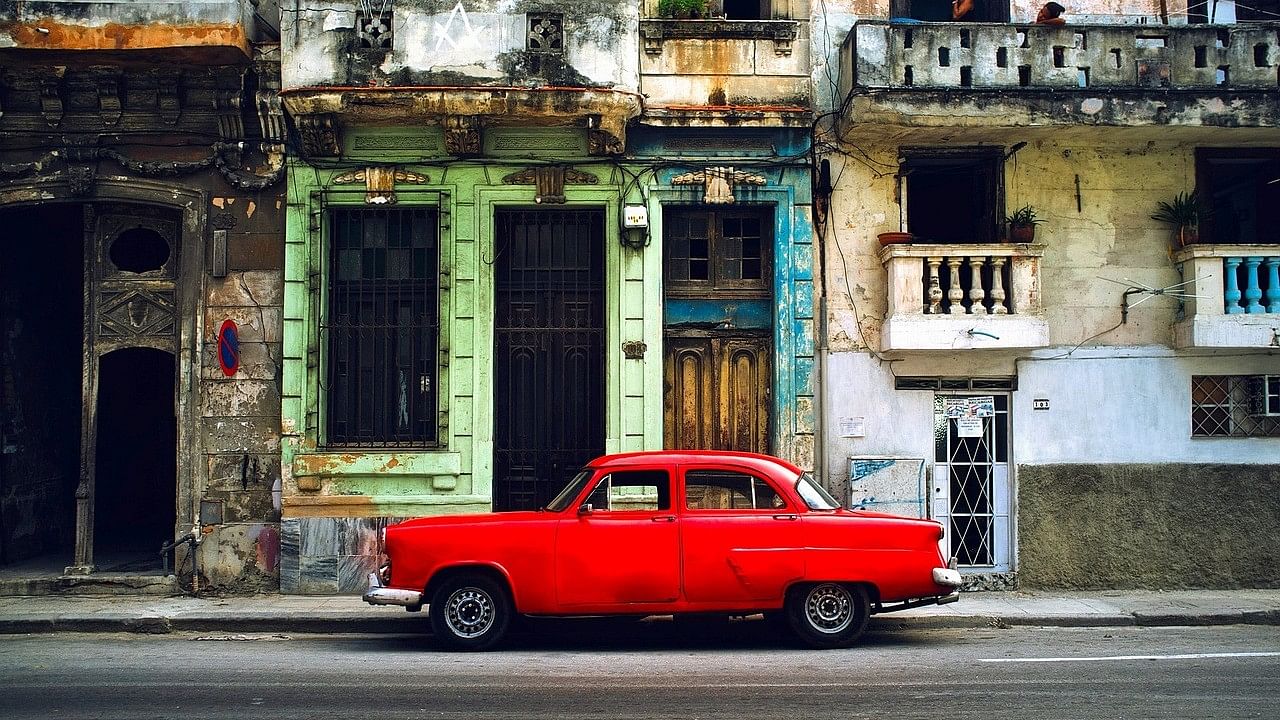
Representative image.
Credit: Pixabay Photo
Cuba stands out in my mind as the most fascinating nation. Striking topography, cultural heritage, staunch patriotism, self-belief, health, and education together make Cuba and its people unique. On a bright afternoon, I was on a flight from Fort Lauderdale Miami to Havana. The window seat accorded a vantage view of the receding Florida coast as the plane cruised in a south-westerly direction. In half an hour, came the colourful Cuban coastline on the horizon. It was a perfect combination of clear blue sky and turquoise blue Atlantic Ocean.
I took the morning coach to Viñales, in western Cuba in the province of Pinar del Río (Pinar River) known for tobacco. It is the gateway to Los Organos mountains and Viñales Valley. Its main street is lined with colourful wooden houses of the colonial era. The Municipal Museum is surrounded by botanical gardens Casa de Caridad. The region’s famous drink Guayabita del Pinar is a rum with flavours of guayabita (little guava). Tall steep-sided limestone hills, known as ‘mogotes’ draw many rock climbers and an ancient rock mural depicting the evolution of man which is impressive.
Havana city, the capital, lives up to its fame with a major port and a thriving commercial centre. Havana attracts over a million tourists annually. The city extends mostly westward and southward from the bay, and a narrow river Almendros traverses from south to north. Founded by the Spanish in the 16th century, its strategic location served as a springboard for the Spanish conquest of the American continents — a stopover for treasure-laden Spanish galleons returning to Spain. King Philip II gave the title Havana in 1592. The majestic neo-classic buildings are well-maintained and spruced up. Old Havana — Habana Vieja — dating to 1519 is the natural harbour in the Bay of Havana. Old Havana is a UNESCO world heritage site.
The Cuban cigar Habanos is famous the world over. Each one of them is still hand-made and perfected to the right diameter, length and spring packed in wooden boxes. The master tobacconist in the tobacco unit in Viñales was not only stylish but also erudite in fermenting, cutting, and rolling. Cigars contribute 25 per cent of Cuba’s export earnings. A visit to the reconstructed native village was an unforgettable experience, with delicate settings and painstakingly enacted ritual dances.
When I boarded the return flight, there was a sense of longing to come back once more to this fascinating island!